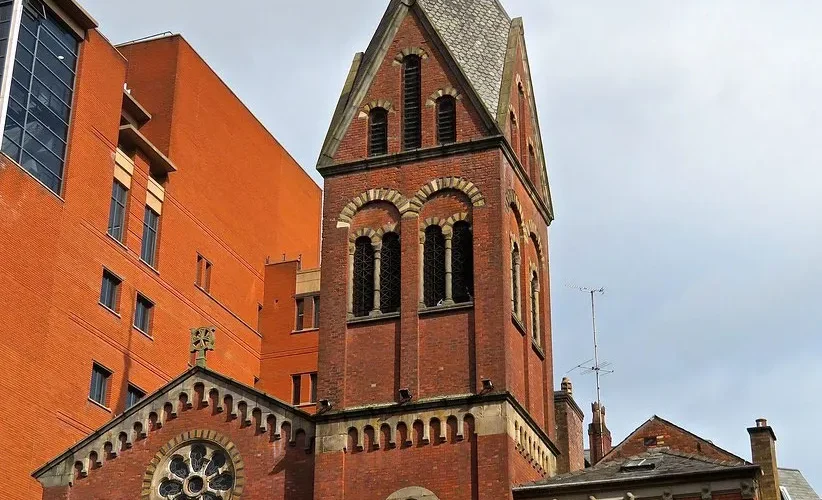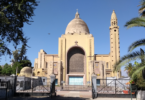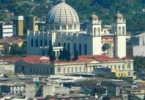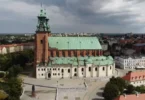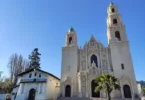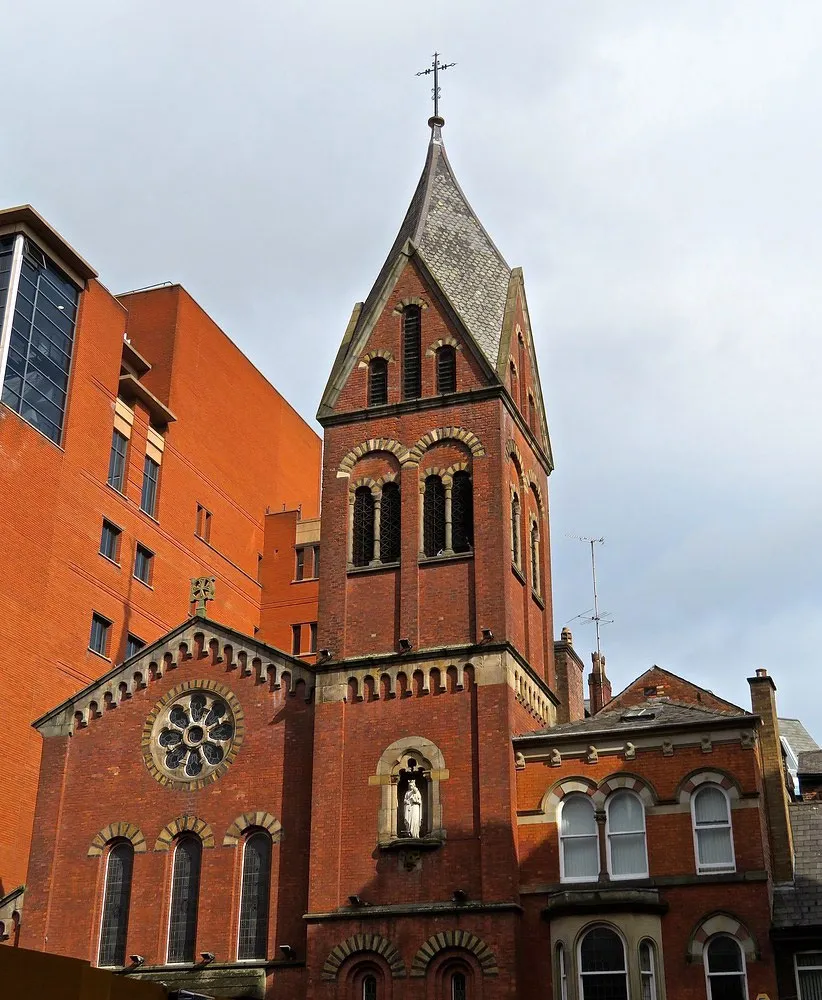
Introduction
St Mary’s Catholic Church has a lovely nickname called the Hidden Gem. The Hidden Gem, officially St Mary’s Catholic Church, is a church on Mulberry Street, Manchester, England. The parish dates back to 1794, with devotion to St Mary, Our Lady of the Assumption, and the present church, rebuilt in 1848, is a Grade II*-listed building which includes the Diocesan Shrine of Our Lady of Manchester. Steeped in history and architectural beauty, St Mary’s RC Church, also known as The Hidden Gem, is a must-visit landmark for anyone traveling to Manchester. This Roman Catholic church is not only an active place of worship but also a captivating testament to the city’s rich past.
St Mary’s Church was an Anglican parish church in Manchester, England. The expanding population of Manchester, caused by the onset of the Industrial Revolution, led to the foundation of several new churches there during the 18th century, among which St Mary’s was one. St Ann’s Church had been consecrated in 1712 and was followed by St Mary’s in 1756. Others, such as St John’s, were constructed in the next few years. The church was sited at Parsonage Croft, an area of land between Deansgate and the River Irwell that had for centuries been the property of Manchester Collegiate Church. It was constructed by the warden and fellows of the Collegiate Church, who obtained an act of Parliament for the purpose in 1753. The foundation stone was laid in the same year and the church was consecrated in 1756,. The living was presented by the Collegiate Church, who appointed Humphrey Owen as the first rector.
The structure was a rather plain building in the Doric style and its architect received some criticism. It had a tower of around 180 feet (55 m), topped with a lantern comprising eight Ionic pillars on which stood a spire. This was the tallest structure in Manchester at the time and not without problems. The top of the spire was damaged in a storm in 1824 and truncated some time afterwards; in 1854, it was removed entirely. Initially within the parish of Manchester, St Mary’s became a parish church in its own right on 29 March 1839. Affluent congregations generally dwindled as the centre of Manchester became increasingly a commercial area. The last regular service at the church was held in December 1887 and it was closed after a service on 4 October 1890, when the extent of dilapidation was such that the last rector, Richard Tonge, had to pause his service temporarily because the copy of the Bible that he was using was missing some pages.
The building was demolished in 1891 and the adjacent Parsonage House, once home to Thomas La Warr, suffered a similar fate in 1897. The site of the two buildings is now an open space and designated conservation area in the city, known as Parsonage Gardens. Some of the church plate, including some chalices, patens and an almsdish, was transferred to St Ann’s.
The first permanent Catholic Mass Centre to be opened in Manchester following the Reformation was dedicated to St Chad: the Rook Street chapel, which opened in 1774, serviced about 600 people coming from as far away as Bolton, Glossop and Macclesfield. In the following years, with the advent of the Industrial Revolution, many Catholic families from Ireland were attracted to the cotton industry in Manchester. This chapel remained in use until it was destroyed by fire in 1846. St Chad’s then moved to its own purpose built church in Cheetham Hill.
In the mid-1790s, the rector of St Chad’s, Father Rowland Broomhead decided to set-up a second chapel in Manchester. He purchased a plot of land near Deansgate and quickly set about the task of building a new church, which opened on 30 November 1794, and was dedicated to St Mary. Contrary to popular local myth, St Mary’s was never built in secret or to be hidden, in fact the opening was announced in the local newspapers and Mulberry Street in the 1790s was a busy residential and commercial thoroughfare opening out onto Deansgate. The description of the church as a ‘Hidden Gem’ originated in 1872 on a visit to the church by the then Bishop of Salford, Herbert Vaughan, who remarked “No matter on what side of the church you look, you behold a hidden gem”.
In 1833, the rector of the Hidden Gem, Father Henry Gillow, decided that the building was looking tired. He enlisted the help of some of the congregation to have the church re-roofed and re-decorated. It was to be a tremendous folly not to have had the work overseen by a master builder. At lunchtime on 8 August 1835, a strange breaking sound could be heard. On looking up people were alarmed to see a crack forming in the dome above the altar. The church was locked up and at 11 pm the whole dome and part of the roof collapsed, damaging much of the interior of the church. Services were moved to Lloyd Street, and the search started for a new site for the church.
Building of the present church
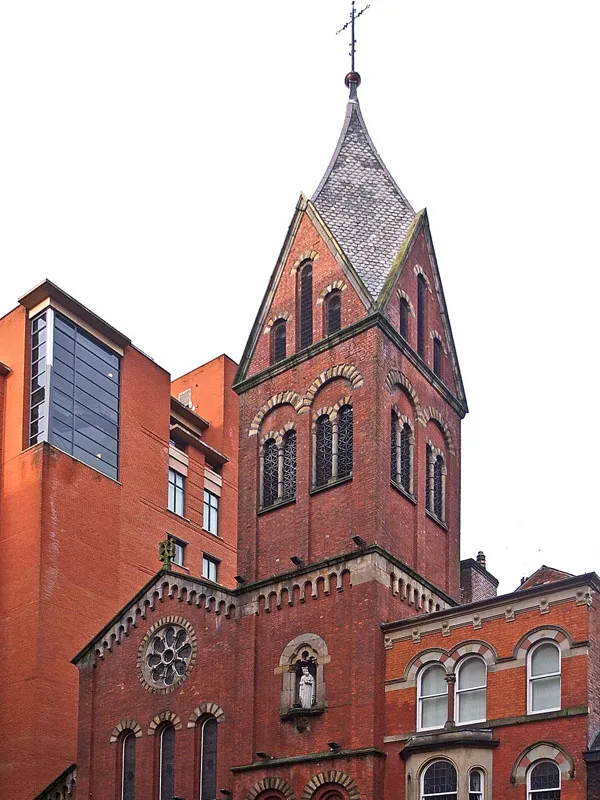
Father Gillow died in the Manchester typhus epidemic of 1837. Any plans for a new site were put on hold, and the decision was taken to rebuild St Mary’s on the existing site. Two architects were consulted, Richard Lane, the architect of Salford Town Hall and the Friends Meeting House, and Augustus Pugin. Richard Lane’s design was chosen at a cost of £265 17s 0d. (Pugin had been paid £138 3s 6d). The architect chosen to oversee the work was Matthew Ellison Hadfield, who later went on to build Salford Cathedral and the new St Chad’s Church, Cheetham Hill. The old St Mary’s Church was entirely demolished and the new St Mary’s was formally opened in October 1848. The church’s design is a blend of Norman, Gothic and Byzantine detail; Pugin himself said that the building “shows to what depth of error even good men fall, when they go whoring after strange styles.”
Architecture of St .Mary's RC Church Manchester
Architects: Matthew Ellison Hadfield, Richard Lane
Architectural styles: Gothic architecture, Byzantine architecture, Norman architecture
Built in Georgian style architecture with classical Greek influences, St Mary’s stands out amidst Manchester’s modern skyline. Its façade is adorned with four Ionic pillars supporting a pediment above which contains a beautiful carving representing King David playing his harp – symbolizing praise and worship towards God. Inside you’ll be greeted by stunningly intricate plasterwork on the ceiling along with numerous religious statues and paintings adorning its walls. Particularly noteworthy are the Stations of the Cross painted by renowned artist Norman Adams RA around 1995-2000; these fourteen images depicting Jesus Christ on His day of crucifixion are considered some of his finest works. Although when St. Mary’s was originally built it was never meant to be hidden, progress through the years means that it’s now surrounded by much taller buildings, some only built fairly recently, but with its beautiful interior, understated yet colourful stained glass windows and calm peaceful atmosphere it really is a Hidden Gem.
ST MARY’S CATHOLIC CHAPEL, MULBERRY STREET A lofty tower rising rapidly between Brazennose Street and John Dalton Street led us to explore its site, and we find it belongs to a building which has sprung up within the last few months, on the site of the old Catholic chapel, Mulberry Street. The new edifice, like the old one, is dedicated to St Mary; and though from a local situation, in a narrow back street, it is almost lost to public view, it is an elaborate piece of architecture, in a style little used in this neighbourhood, – the Norman style, which prevailed from the middle of the eleventh century. The design is by Messrs Weightman and Hadfield, architects, Sheffield, the architects of St John’s catholic church, Salford. The new edifice in Mulberry Street is of brick, enriched with stone dressings, courses, arches, niches, windows, etc. The principal front and entrance is on Mulberry Street, at what in architectural and ecclesiastical parlance would be called the west end; but it is really the south. The elevation of this front is very striking and pleasing. The chief characteristics of the Norman style are semi-circular arches, often richly ornamented with zigzag and other mouldings; narrow and deeply splayed or recessed windows; and massive piers, either cylindrical, square, or polygonal. The centre of the front is distinguished by an elaborate semi-circular door, highly enriched by carved stone mouldings in the style of the period. Over the door and within the arch, is a basso-relievo, in stone, representing two angels, supporting a medallion, on which are represented the lamb and the cross. Over the door is a three light window, and over this again a singular circular wheel window of eight lights, exclusively of the nave-light. The east wing consists of the tower, which is square and rises to a height of 115 feet from the ground to the top of the cross. This is a favourable specimen of the Norman tower, from an example in the Netherlands. On the principal floor it has a two-light window; above this is a niche to receive a stone statue of the Virgin and Infant Jesus; above this again the belfry windows; and then the tower has the usual Norman termination, – four gables, and between them a lozenge-shaped roof slated up to a point, from which point springs the surmounting metal cross. The west wing is small, and its chief ornaments are a small circular window, and over this a two-light window. Inside the edifice is divided into a nave with clerestory and two side aisles.
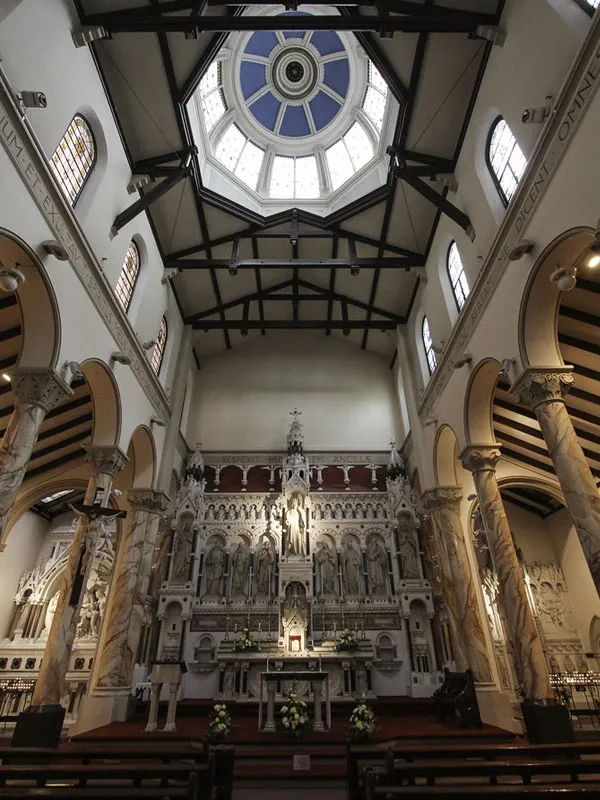
Exterior
Externally, the Hidden Gem is built of plain red brick, with an ornate bell tower, stone-dressed church windows, and an entrance marked out with a fine stone doorway, which is finely carved and depicts two Angelic Hosts bearing a medallion of Agnus Dei. A hand above forms the sign of the Ascension of Christ. The inscription is “Ascendamus in montem Domini. Et adoremus in loco Sancto eius” a construction of two bible verses: “Come, let us go up to the mountain of the Lord”,(Isaiah 2:3) and “Praise Him in His Holy places”.
Interior
Internally, there is majestic Victorian carving. The High Altar is made of marble, finely carved and life size images of Our Lady, St Stephen, St Patrick, St Peter, St John, St Hilda, St Augustine and St Joseph. Central to this, above the tabernacle, is Christ bearing the Sacred Heart. There is a Pietà Chapel and a Lady Chapel containing the Diocesan Shrine of Our Lady of Manchester. The Stations of the Cross were painted in 1994 by artist Norman Adams and are in a striking expressionist style.
On the left of the high altar, is a side altar of marble and Caen stone dominated by the life-size Pieta. Around the top are the figures of angels. The shrine of Our Lady of Manchester is on the right of the high altar. The shrine also comprises the scene from Our Lord’s nativity on the left and the presentation in the Temple of Our Lady as a little girl by her parents, St. Joachim and St. Anne. In a wall to the right, is a stained glass window representing Our Lady and her prayer, the Magnificat.
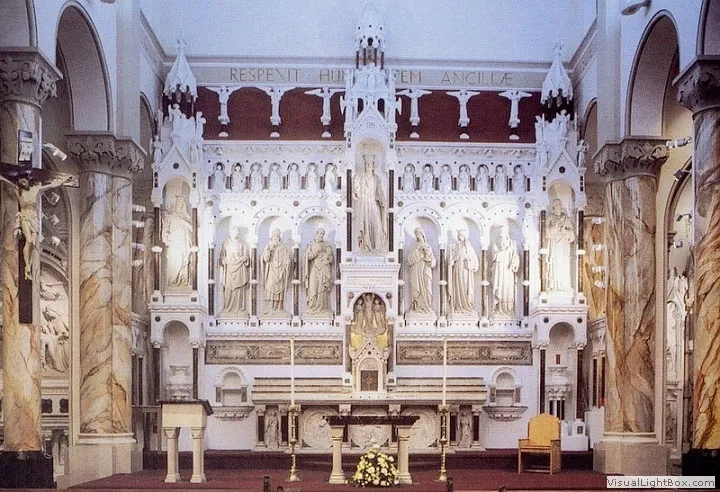
Rook Street Chapel
In 1774, a small house/chapel was erected, which stood at the northern end of what is now Fountain Street and West Mosley Street. It was named the Rook Street Chapel and dedicated to St. Chad. It served the scattered Catholic population of areas in Manchester, Salford, Bolton Rochdale, Trafford, Stockport, Glossop and Macclesfield, which numbered probably no more than 600. The chapel was taken over by Father Roland Broomhead in 1778, beginning a 42 year service of ministry to the people of Manchester. The chapel was completely destroyed by fire in 1846 and no trace of it remains. A new parish of St. Chad’s was then founded away from the city, as it was then, in Cheetham Hill. St. Mary’s, The Hidden Gem, on its site in Mulberry street since 1794, thus predates St. Chad’s by 52 years.
The building and dedication of the "Hidden Gem"
Father Broomhead purchased a plot of land in Mulberry street for the erection of a new church, dedicated to Our Lady’s Assumption into Heaven. The official opening of the church was on 30th November 1794. Rev Arthur J. Dobb, an Anglican historian commented in his “History of the Diocese of Manchester” published in 1978: “The Roman Catholic Church sought to tackle Manchester’s deepest troubled area which lay between Deansgate and Albert Square. A church was built in 1794 in Mulberry Street on a site crowded in by intensive poor-quality housing on land which had so recently been open meadow and grazing pasture.”
“St. Mary’s much rebuilt, still stands of the same plot of land, now surrounded by the edifices of sophisticated materialism, which is probably more spiritually barren ground than the moral vileness of the 18th century.” Along with the church, on the same plot of land, the presbytery stands next to it, and has been continuously occupied since 1794.
Hidden Gem highlights
The major highlights of the Hidden Gem can be found throughout its construction. Outside, you’ll notice that the church is crafted with plain-red brick similar to many of its surrounding buildings, though the Italian architectural style still distinguishes its features significantly. The stone-dressed windows and stone doorway are impressive as well, especially the intricately carved angels on the doorway.
Inside, the carvings are notably Victorian with a marble high altar. Being a Catholic Church, images of Our Lady are prevalent throughout with additional imagery of St Stephen, St Patrick, St Peter and more. Above the tabernacle, you can spot Christ bearing the Sacred Heart.
Adams’ Stations of the Cross
As a nationally acclaimed major work of art the Adams Stations of the Cross are attracting many visitors, of whom a considerable number are non-Catholics. Sister Wendy Beckett, who considers them “a miracle of art”, said that many folk would come over the years to view the pictures as great art, and would through them “find the Lord”. This has happened already, to my knowledge, again and again. All kinds of groups, large and small, are continually coming to study them. These include the likes of the theology department of Durham University, the fine arts department of Manchster University, the art departments of Lancaster University and Newcastle University, the patrons and friends of the Whitworth Art Gallery, the Manchester Art Gallery and the London Royal Academy of Arts.
When Sir Philip Dowson, the President of the Royal Academy of Arts, opened their exhibition at the Royal Academy in London in 1995, he said; “Is it not wonderful, at the end of this century, that our minds are being raised by the greatest of modern art to Our Lord’s saving passion ?” He also said then that he would come to see them in situ. This he did in 1997. When he entered the church and viewed them, he was so moved that he wept. He said the setting was perfect. Before he left, he told the Lord Mayor of Manchester that the City must recognise the treasure it had in the Adams Stations of the Cross in St Mary’s. Such recognition has been given too by the likes of the Queen Mother, the Duchess of Kent, Richard Harries, the former Anglican Bishop of Oxford, the Rt. Hon Christopher Patten, Sir Stephen Tumin, to name a few.
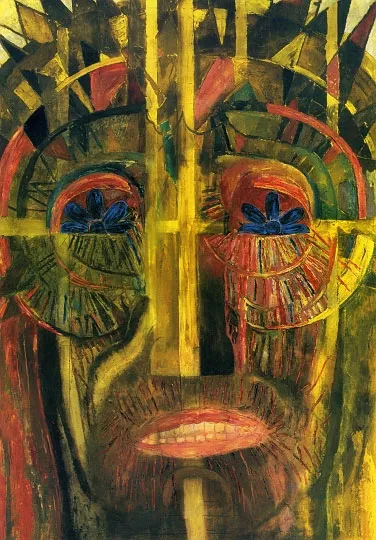
Norman Adams Fourteen Stations of the Cross
Norman Adams Fourteen Stations of the Cross is one of the great ecclesiastical commissions in our country this century, and is an act of inspired patronage on the part of Canon Denis Clinch for St. Mary’s, The Hidden Gem, Manchester. Norman Adams considered them to be the greatest work of his life and I believe this to be true. There is in these canvasses an expression of compassion intensely felt, which communicates immediately to people. Gentleness, terror, pain and suffering, within a frame of deep understanding and sympathy, distinguish these works. The events of the tragedy are told with the horror which leads from innocence to the Cross. It is a brave man who looks straight into the death mask in the crucifixion, or a man without feeling who would not be deeply moved by the tenderness of the laments in the Women of Jerusalem.
It is wonderful that these stations of the cross will have a permanent home in St. Mary’s Church, known as the “Hidden Gem” of Manchester. The Royal Academy is proud to have such a distinguished painter as a Member, and recognises the dedicated life-time’s work and experience which lies behind this great achievement.
Spiritual Significance
Apart from being an architectural masterpiece, St Mary’s remains an important spiritual hub for Manchester’s Catholic community providing daily mass services and confession opportunities while hosting baptisms, weddings and funerals too. Its peaceful ambiance offers a serene retreat from the bustling city life, making it an ideal place for personal reflection and prayer.
Further developments
In 1872, Herbert Vaughan became the second Catholic Bishop of Salford. Bishop Vaughan also founded Manchester’s most famous Catholic school, St. Bede’s College. He also was the first to use the term “Hidden Gem” to apply to the church, commenting that: In the early 1990’s, the church was completely restored, rewired, decorated and repaired outside and within, as was the ancient presbytery. When Granada Television showed Sunday Mass from St. Mary’s over the national network on 24th July 1988, the immensely favourable response from all over the British Isles by letter and telephone, from Catholic and non-Catholic was beyond all expectation. Bishop Kelly, in 1990, described the visit of the Papal Pro-Nuncio Archbishop Barbarito as “an endorsement of the Hidden Gem’s great service to the spiritual wellbeing of the whole city”. In 1994, St. Mary’s celebrated its bicentenary and continues to be a spiritual oasis, for Catholic and non-Catholic alike, in the heart of a busy and thriving modern city.
Annual Feast Day
Feast day: 15 August
The annual feast day of The Church of St. Mary’s RC Church Manchester, England is celebrated on August 15 each year.
Mass Timing
Holy Mass
Weekdays: 12.30 pm
Saturdays: 12noon and 5.15 pm (First Mass of Sunday)
Sunday 10.00 am and 12noon.
Adoration of the Blessed Sacrament
Monday to Friday: 11.30 am to 12.30 pm.
Saturday: 10.30 am to 12.00 Pm
Confessions
Monday to Friday: 11.30 am to 12.10 pm.
Saturday: 10.00 am to 11.30 am.
Contact Info
17 Mulberry St,
Manchester M2 6LN,
England,
United Kingdom.
Phone No.
Phone: +0161 834 3547
Phone: +44 161 834 3547
Accommodations
Connectivities
Airway
The nearest airport to The Church of St. Mary’s RC Church Manchester, England is, Manchester Barton Aerodrome, Liverpool Rd, Eccles, Manchester M30 7SA, United Kingdom, which is just 20 min (7.7 mi) via M602 away from the basilica.
Railway
The nearest railway to The Church of St .Mary’s RC Church Manchester, England, Mauldeth Road, Manchester M14 6SG, United Kingdom, which is just 21 min (5.9 mi) via A34 away from the basilica.

